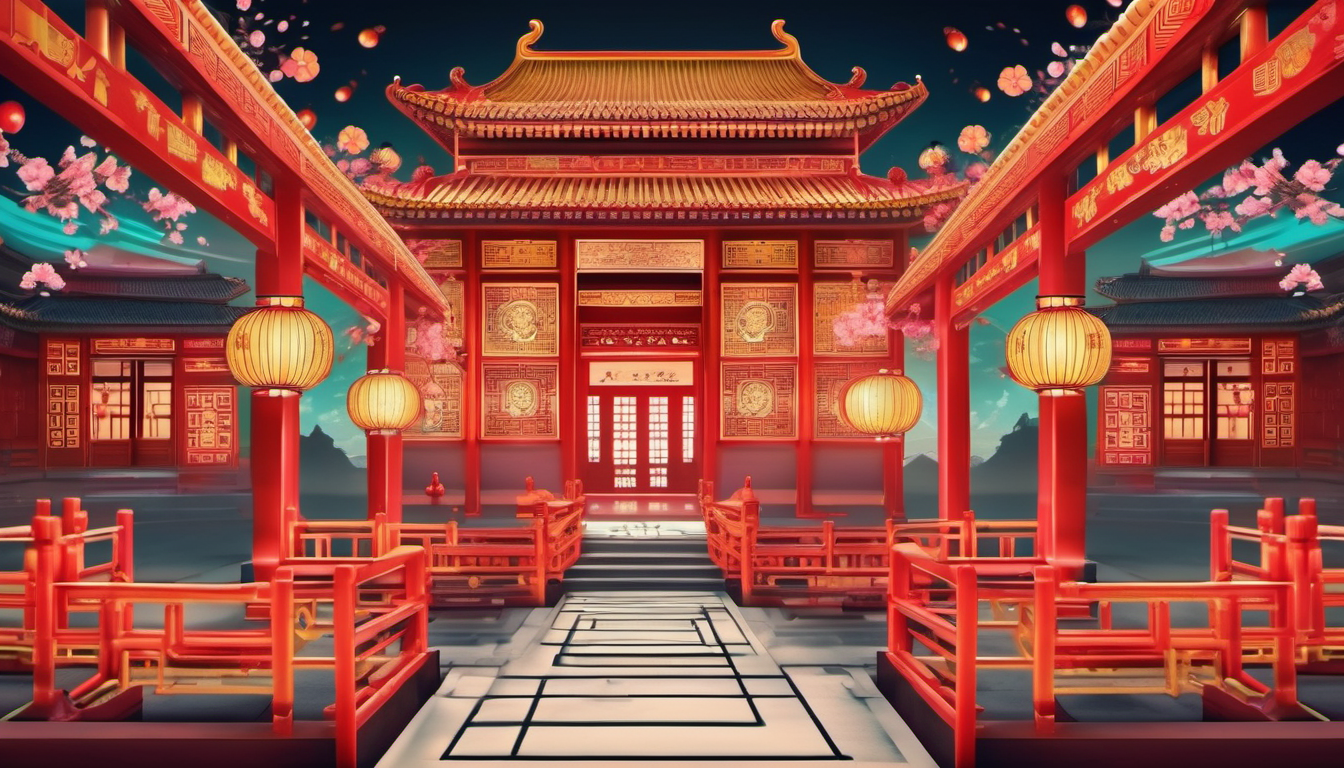The Beauty of Symmetry in Chinese Culture
Symmetry in Chinese culture symbolizes balance and harmony, it is evident in daily life, from paired chopsticks to grand symmetrical architecture like the Forbidden City. This cultural preference reflects the Chinese pursuit of equilibrium in all aspects of life.

Symmetry holds a profound significance in Chinese culture, embodying an aesthetic principle that is deeply rooted in the nation’s history, philosophy, and daily life. The appreciation for symmetry manifests in various aspects of Chinese life, from the ubiquitous pair of chopsticks to the grandeur of classical architecture. This essay explores the reasons behind the emphasis on symmetry in Chinese culture and aims to provide a comprehensive understanding of its profound implications.
Historical and Philosophical Foundations
The Chinese appreciation for symmetry can be traced back to ancient philosophies and cultural beliefs. Confucianism, Taoism, and the cosmological principles of Yin and Yang all play pivotal roles in shaping the Chinese worldview, where balance and harmony are paramount.
Confucianism and Social Harmony
Confucianism, which has been a dominant ideology in China for over two millennia, emphasizes harmony and order in both personal conduct and societal structure. Symmetry in this context represents an ideal state of balance, reflecting the harmonious relationship between heaven and earth, ruler and subject, parent and child. The symmetrical layout of buildings, gardens, and even utensils symbolizes a well-ordered and morally upright society.
Taoism and Natural Balance
Taoist philosophy, with its focus on the natural world and the principle of balance, also contributes to the Chinese love for symmetry. The concept of Yin and Yang, where opposing forces complement and balance each other, is a cornerstone of Taoist thought. This duality and balance are often visually represented through symmetry, symbolizing the interdependence of all things in the universe.
Symmetry in Daily Life
Chopsticks: A Symbol of Unity and Balance
One of the most recognizable symbols of Chinese culture is the pair of chopsticks. Used daily by billions, chopsticks are a simple yet profound embodiment of symmetry. The use of two sticks, identical in size and shape, represents balance and coordination. The act of using chopsticks requires a harmonious movement between the two sticks, symbolizing the importance of cooperation and balance in everyday life. Additionally, the equal length and shape of chopsticks signify equality and partnership, essential values in Chinese society.
Traditional Clothing
Traditional Chinese clothing, such as the Hanfu, is often designed with symmetrical patterns. This symmetry is not only aesthetically pleasing but also signifies the wearer’s balanced and harmonious state of being. The intricate designs and careful craftsmanship reflect a cultural preference for order and balance in personal presentation.
Architectural Symmetry
Imperial Architecture
Chinese architecture, especially that of imperial structures, showcases an extraordinary level of symmetry. The Forbidden City in Beijing is a prime example, where buildings are aligned along a central axis, creating a mirror-image effect. This symmetry is not merely for visual appeal but serves to reflect the cosmic order and the emperor’s role as the mediator between heaven and earth. The balanced layout is also intended to evoke a sense of awe and respect, reinforcing the authority and stability of the imperial rule.
Religious and Spiritual Structures
In religious and spiritual contexts, symmetry is equally significant. Buddhist temples, Taoist monasteries, and Confucian halls are often designed with symmetrical layouts. This architectural symmetry is intended to create a serene and balanced environment conducive to meditation and spiritual practice. The harmonious design of these spaces reflects the inner peace and balance that practitioners seek to achieve.
Entrance Gateways
Symmetry is also evident in traditional Chinese gateways, often featuring a pair of imposing stone lions. These lions are strategically placed on either side of the entrance, serving both as guardians and as symbols of power and protection. The symmetry of these stone guardians enhances the visual and symbolic balance of the entrance. Similarly, large, symmetrical double doors are a common feature in traditional Chinese architecture, symbolizing openness and balance.
Symmetrical Landscaping
Another notable example of symmetry is seen in the traditional practice of planting two identical trees on either side of a building or pathway. This practice not only enhances the aesthetic appeal but also symbolizes harmony with nature and balance in the environment. The mirrored trees create a natural frame, emphasizing the importance of symmetry in both constructed and natural spaces.
Symmetry in Art and Literature
Calligraphy and Painting
Chinese calligraphy and painting often emphasize balance and harmony through symmetrical compositions. In calligraphy, the structure of each character must be balanced, with each stroke carefully placed to achieve visual harmony. Traditional Chinese paintings frequently depict landscapes with a balanced distribution of elements, creating a sense of equilibrium and tranquility.
Literature and Poetry
Symmetry is also evident in Chinese literature and poetry. Classical Chinese poetry often follows strict metrical patterns and parallel structures, which create a rhythmic balance and enhance the aesthetic experience. This literary symmetry mirrors the cultural emphasis on order and harmony in both form and content.
The Cultural Significance of Symmetry
The preference for symmetry in Chinese culture extends beyond mere aesthetics; it is deeply intertwined with cultural values and philosophical principles. Symmetry represents an ideal state of balance, reflecting the harmonious relationship between different elements of the universe. This cultural inclination towards symmetry can be seen as a manifestation of the Chinese pursuit of harmony, both in the natural world and in human society.
Symbol of Balance and Harmony
Symmetry serves as a visual representation of balance and harmony, core values in Chinese culture. Whether in the form of paired chopsticks, symmetrical buildings, or balanced artistic compositions, symmetry reflects the Chinese ideal of achieving equilibrium in all aspects of life. This balance is seen as essential for maintaining order and harmony in both the individual and the collective.
Reflection of Social and Cosmic Order
The emphasis on symmetry also reflects the Chinese understanding of social and cosmic order. Symmetrical designs in architecture and art are seen as manifestations of a well-ordered universe, where each element has its rightful place. This ordered structure is believed to promote stability and harmony, both in the physical world and in human relationships.
Aesthetic and Practical Considerations
From an aesthetic standpoint, symmetry is inherently pleasing to the eye, creating a sense of order and clarity. Practically, symmetrical designs can also enhance functionality and usability, as seen in the balanced design of tools and utensils like chopsticks. The combination of aesthetic appeal and practical utility further reinforces the cultural preference for symmetry.
The beauty of symmetry in Chinese culture is a testament to the nation's deep-rooted values and philosophical principles. From the elegance of paired chopsticks to the grandeur of symmetrical architecture, symmetry embodies the Chinese ideals of balance, harmony, and order. This cultural preference for symmetry is not merely a matter of aesthetics but is deeply intertwined with the Chinese worldview and way of life. By appreciating the profound significance of symmetry in Chinese culture, one gains a deeper understanding of the values and philosophies that have shaped this ancient civilization.



